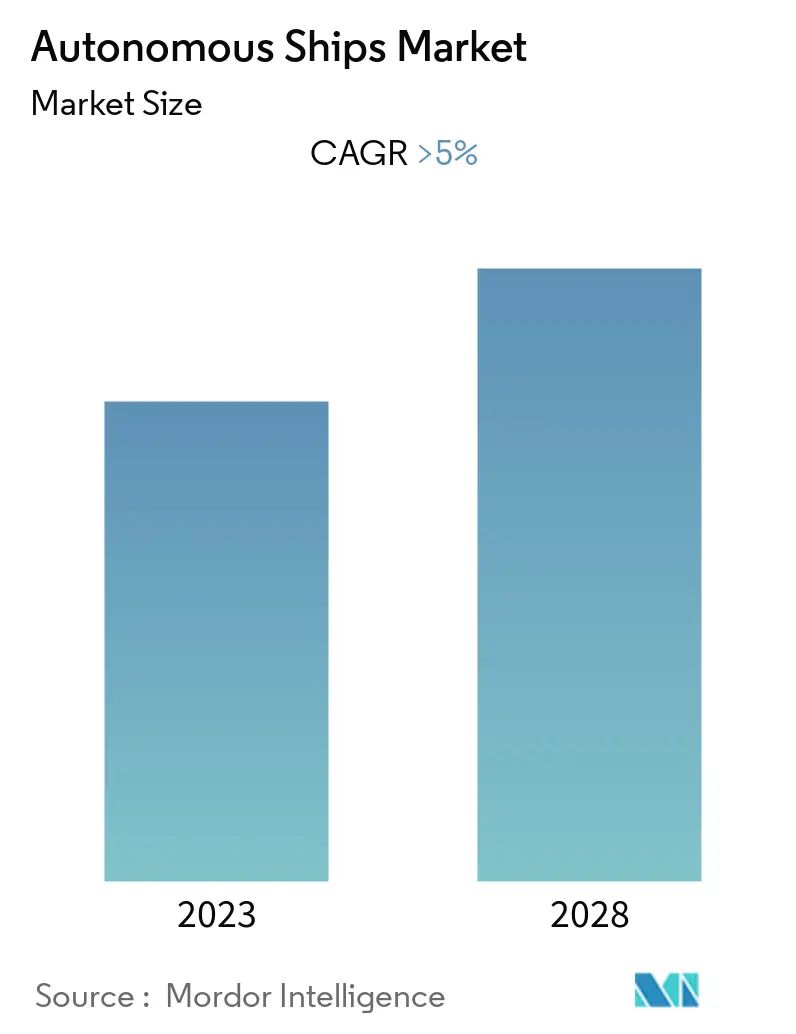Market Size of Autonomous Ships Industry

| Study Period | 2018 - 2028 |
| Base Year For Estimation | 2021 |
| Forecast Data Period | 2024 - 2028 |
| CAGR | > 5.00 % |
| Fastest Growing Market | Europe |
| Largest Market | Europe |
Major Players
*Disclaimer: Major Players sorted in no particular order |
Need a report that reflects how COVID-19 has impacted this market and its growth?
Autonomous Ships Market Analysis
The autonomous ships market is anticipated to register a CAGR of above 5% during the forecast period.
- The demand for autonomous and remotely controlled ships is growing at a rapid pace, due to the developments in sensor technology, connectivity at sea, and analysis and decision support software and algorithms (artificial intelligence) for various onboard applications, like navigation and situational awareness.
- The autonomy of the shipping industry is expected to reduce the maritime emissions, enable massive fuel savings, and save about 20% of the cost incurred for the shipping operators. Additionally, according to the European Maritime Safety Agency (EMSA), 58% of accidental events and 70% of accidental events were attributed to human error on shipboard operations. This technology is anticipated to apprehend such accidents due the human error on the bridges of the vessel, thereby, reducing the accidents onboard.
- In several countries, like Finland, the United Kingdom, Norway, South Korea, China, and Japan, various companies (in different industries, like shipbuilding, engine manufacturers, big data, and other software providers) are collaborating and forming research alliances to increase the human-machine interface and incorporate autonomy into the naval architecture. Such collaborations are expected to propel the growth of the market during the forecast period.
- The cost for integration of autonomy into naval vessels, the threat of cybersecurity, and the reliability of software and machinery aboard the vessels are anticipated to act as barriers for the growth of the autonomous ships market during the forecast period.
